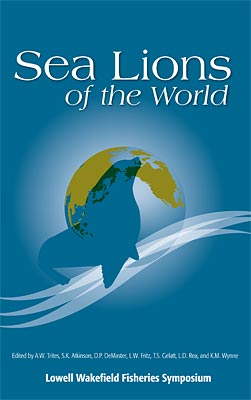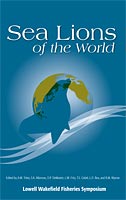
Using simulations to evaluate reconstructions of sea lion diet from scat
R. Joy, D.J. Tollit, J.L. Laake, and A.W. Trites
- Price: $1.60 Sale: $0.00
 This is part of Sea Lions of the World
This is part of Sea Lions of the World| Format | Price | |
|---|---|---|
| PDF download [410.7 KB] Bypass cart and download |
Free | Add to Cart |
Description
Models used to describe pinniped diet can provide very different composition estimates. Occurrence indices as well as biomass reconstruction models (which use estimates of the number and sizes of prey consumed) are commonly used and increasingly utilize a variety of fish hard remains (bones) found in scats. However, the importance of any single fish can be overestimated if its bones are deposited in a succession of scats assumed to be from different fish. Similarly, the importance of a species will be underestimated relative to other species if the bones of one species are more fragile and are completely digested or if bones from different fish of the same species are contained in a single scat and assumed to be from a single fish. Species differences in the proportion of fish bones that survive digestion can be assessed from captive feeding studies where the number and species of prey consumed is known. Numerical correction factors can be calculated to take into account the levels of complete digestion. We performed computer simulations using data from captive feeding studies to investigate levels and sources of error
in reconstructing simulated mixed species diets. Our simulations used different combinations of hard remains, were conducted both with and without the application of numerical correction factors, and compared four different diet indices (1. Modified frequency of occurrence, 2. Split sample frequency of occurrence, 3. Variable biomass reconstruction, 4. Fixed biomass reconstruction). Simulations indicated that levels of error were related to the MNI method of inferring fish numbers from prey remains, prey size, the number of identifiable prey structures used, and the robustness of the remains to digestive processes (recovery rate). The fewer fish fed, the higher the relative probability of counting the fish, particularly when a multiple element structure or all structure techniques are used. If recovery rates were assumed to be consistent across species, then large fish (particularly when fed in small amounts) were overestimated relative to smaller sized prey in all models, but particularly biomass reconstruction models and when using more than one paired structure. When recovery rates of a paired structure (otoliths) were varied across species (as observed in captive feeding studies) then biomass models with no correction factors applied tended, as expected, to overestimate the species with high recovery rates. In contrast, frequency of occurrence models overestimated the contribution of smaller prey (particularly when fed in small amounts). Simulations also indicated correction factors can reduce levels of error in biomass reconstruction models, but cannot solve problems related to counting fish using MNI. Our work shows simulations can form a valuable component in assessing diet indices and the level (and direction) of associated errors in each.
Item details
- Item number: AK-SG-06-01o
- Year: 2006
- DOI: https://doi.org/10.4027/slw.2006.15



